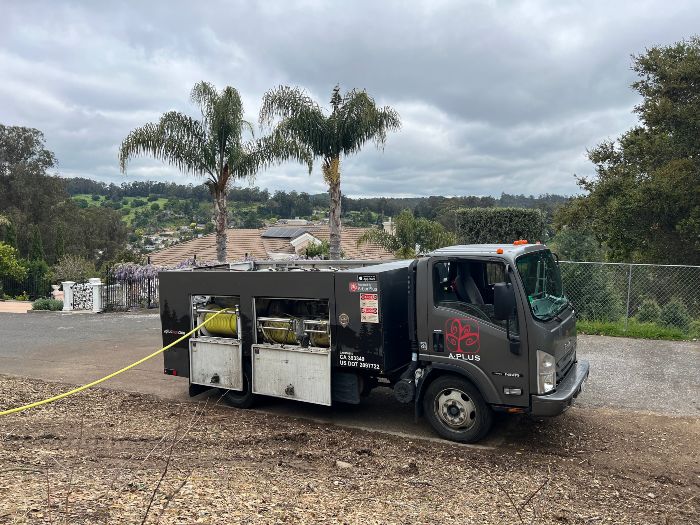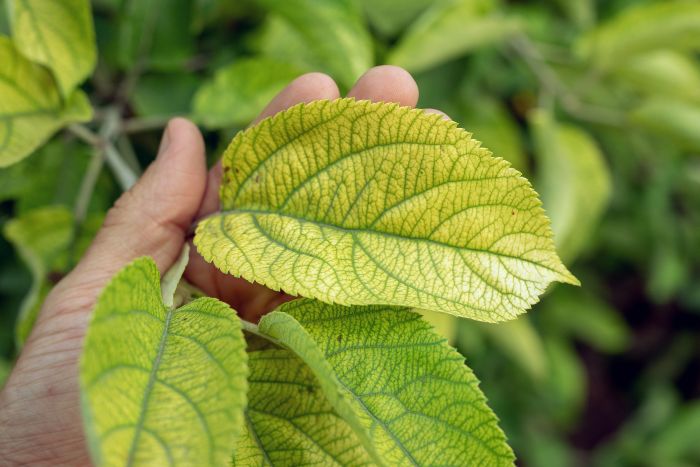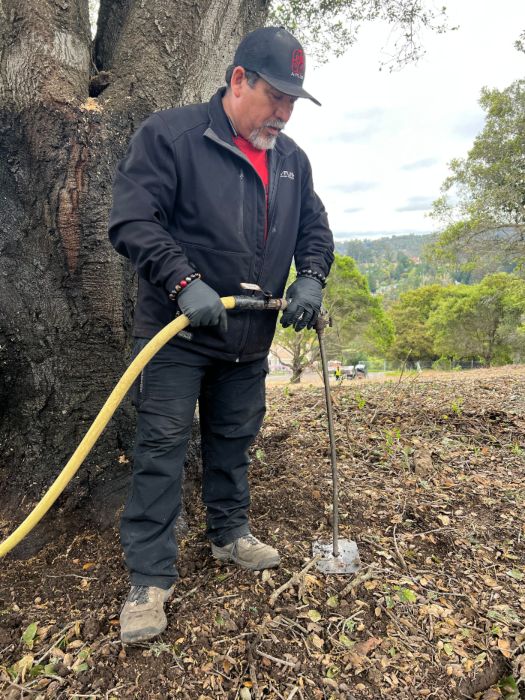Just like people, trees need nutrients to thrive. And while nature provides much of what they need, urban trees often need some additional fertilization. Urban landscapes are highly developed, and the soils frequently lack nutrients. When your trees start looking a little yellow or sparse, it might be time to give them a nutrient boost. If your trees need fertilization help, visit our tree fertilization services page for more info and tips on fertilizing. But for this blog, we’ll be discussing the details on when and how to fertilize your trees.
When Should You Fertilize Trees?
Timing is everything when it comes to fertilizing trees. The best time depends on the tree species and the climate of your area. However, the rule of thumb is that early to mid-spring is ideal. This is when trees are actively growing and can immediately put the nutrients to good use, minimizing fertilizer leaching. Spring fertilization helps kick-start growth by giving trees a boost right when they need it most!
How Often to Fertilize Trees?
Most trees benefit from annual fertilization, but this can vary based on the tree’s age, species, health, and soil quality. Young, fast-growing trees or those in a weakened state may require more frequent feeding to support their growth or recovery. On the other hand, mature and healthy trees need less frequent fertilization. Consider testing your soil to analyze its nutrient composition and create a customized tree fertilization schedule.

Signs Your Tree Needs Fertilizing
Look for these signs to identify when a tree needs a nutritional boost. Common indicators include:
– Slowed growth compared to previous years
– Smaller than usual leaves, or fewer leaves
– Yellowing leaves
– Premature autumn coloration and leaf drop
– Visible signs of disease or distress
These symptoms suggest your tree is lacking essential nutrients and could benefit from fertilization.

How to Fertilize Trees?
Fertilizing trees is more than just scattering some granules around the base. Here are some suggested steps for successful fertilization:
- Soil Testing: Begin with a soil test to identify nutrient deficiencies.
- Root Zone Fertilizing: Apply fertilizer directly to the root zone area, which extends as far as the branches reach overhead (the drip line).
- Method of Application: You can apply fertilizer using spikes, granules, or liquid. Each method has its pros and cons. Spikes have controlled, slow release of nutrients but mostly feed the roots immediately surrounding the spike. Granules are very easy to apply but are exposed and have more runoff. Liquid fertilizers feed the entire root zone but require more equipment to apply. Your choice will depend on the specific needs of your tree, the results of the soil test, and your application preferences.

What Makes a Good Tree Fertilizer?
A good tree fertilizer should have a balanced mix of nitrogen (N), phosphorus (P), and potassium (K), often referred to as N-P-K ratio on fertilizer packages. The specific needs of your tree will dictate the ratio required. Additionally, fertilizers that include micronutrients like iron, manganese, and zinc may be required for lush growth and to prevent chlorosis.
How Much Fertilizer Should You Use on Trees:
The amount of fertilizer you should use varies based on the product’s concentration, the size and age of the tree, and the soil’s existing nutrient levels. A general rule of thumb is to use 2 to 4 pounds of nitrogen per 1,000 square feet of root zone area per year, adjusting based on the tree’s response and growth.
Baby Trees:
Young or newly planted trees are especially vulnerable and require careful fertilization. Initially, focus on watering rather than heavy fertilizing to help establish roots. Over fertilizing can cause unnatural growth spurts or even “burn” the roots because salts in fertilizer can draw moisture out from the tree. After the first year, a light application of a balanced, slow-release fertilizer can help support growth without overwhelming the young tree.
Growing Trees:
As trees mature from saplings into young adults, their nutritional needs increase. This is an important phase of developing strong structures and canopies. Annual fertilization, tailored to the tree’s specific growth rate and the soil’s nutrient content, can make a significant difference in its development and longevity.
Mature Trees:
Mature trees may not need as much fertilization as their younger counterparts if they are healthy and in a well-balanced soil. However, they still benefit from periodic checks and possibly supplemental nutrition, particularly if they are showing signs of stress or nutrient deficiencies.
By recognizing the signs that your trees are in need, knowing when and how often to fertilize, and choosing the right fertilizer, you can ensure your trees remain a beautiful part of your landscape for years to come. If you’re looking for professional help, don’t hesitate to contact us for your tree fertilization needs!





